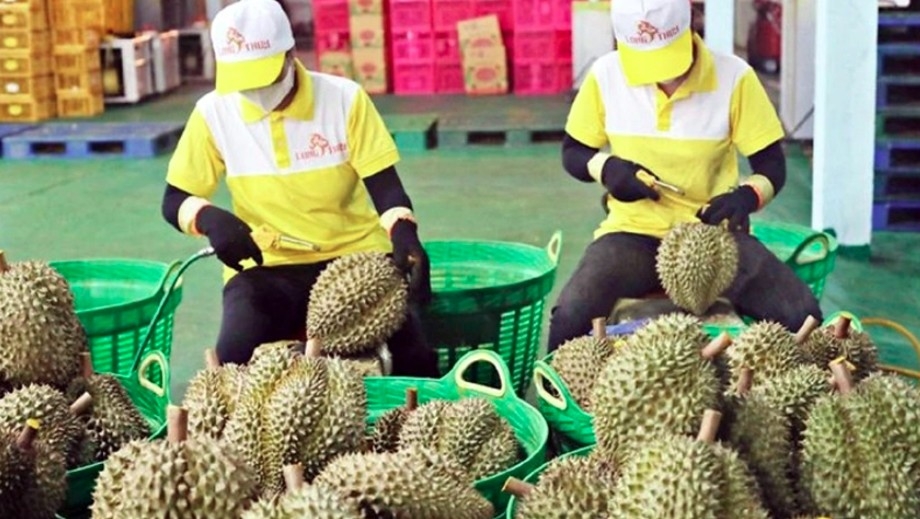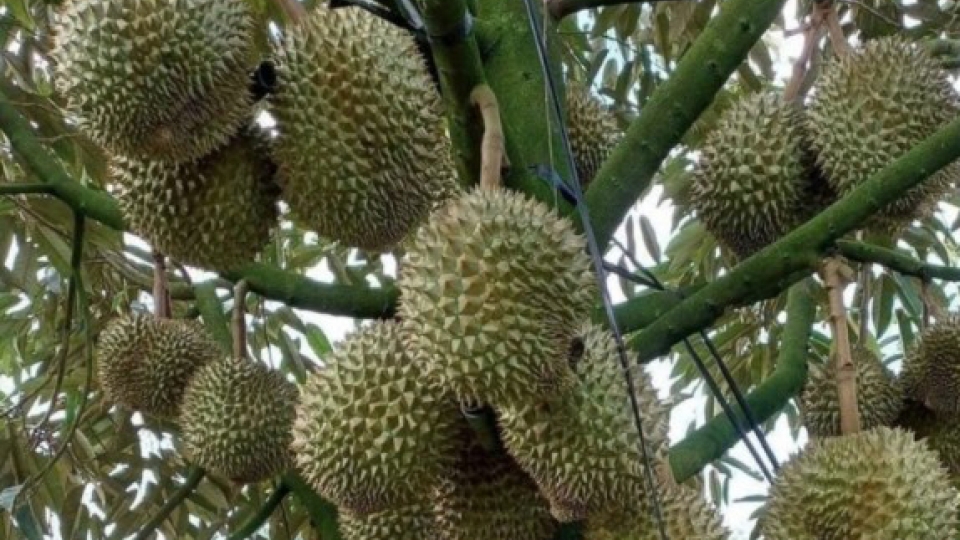New export standards set to elevate Vietnam’s durian sector
VOV.VN - Durian exports are making a strong recovery, with total revenue projected to reach US$2.4 billion in 2025. For the first time in a decade, Vietnam is updating its national durian standards to improve product transparency and safeguard the reputation of its agricultural exports globally.

In June 2025, Vietnam’s fruit and vegetable exports recorded robust growth, with durian showing clear signs of resurgence. In addition to China, Vietnamese durian has started entering the Thai market.
Major growing regions such as the Central Highlands and Southeastern provinces, with low cadmium content, have helped improve compliance with export standards. Exporters are also stepping up quality control at the orchard level and tightening sourcing and packaging procedures. Meanwhile, supply disruptions in some parts of Thailand have created new import opportunities for Vietnamese durian.
According to Dang Phuc Nguyen, Secretary-General of the Vietnam Fruit and Vegetable Association, durian exports remained under US$100 million per month during the first quarter of 2025.
Growth began to surge in April, with exports reaching over US$100 million that month, US$204 million in May, and more than US$300 million in June, nearly equal to the total from the previous five months combined.
July exports are expected to reach US$350-400 million, bringing the seven-month total to over US$1 billion. The peak harvest and export season will run from August through October, with full-year exports forecast to exceed US$2 billion.
At a meeting on July 29, Huynh Tan Dat, Director of the Department of Crop Production and Plant Protection, reported a sharp rise in frozen durian exports. The remainder of the year will be a critical window, and Vietnam is working closely with China’s General Administration of Customs (GACC) to streamline export procedures.
In late June, a GACC delegation inspected growing areas, packaging facilities, and laboratories in Vietnam. The delegation praised Vietnam’s regulatory efforts and pledged support to ensure smooth customs clearance in the months ahead.
Deputy Minister of Agriculture and Environment Tran Thanh Nam also affirmed that durian exports are on an upward trajectory, thanks to tighter controls on contaminants such as cadmium and auramine O. This is expected to reinforce export momentum through the rest of the year.
New national standards aim to boost durian quality and credibility
To sustain export growth and enhance product value, the Ministry of Agriculture and Environment is drafting a new national standard (TCVN) for fresh durian, aiming to standardize quality from farm to market, both domestic and international.
The draft applies to two main cultivars: Ri6 (local) and Dona (imported from Thailand), which together account for 90-95% of Vietnam’s durian acreage, along with several other Vietnamese-grown varieties.
Under the new rules, durians must be intact, fresh, and free from pests or defects such as dry pulp, underdeveloped segments, or wet cores.
The total allowable defect rate must not exceed 5% of the edible portion. The draft also specifies ripeness levels by region, in addition to criteria on shape, color, flavor, weight, and physico-chemical properties.
Key technical requirements include a minimum dry matter content of 32.29% for Ri6 and 32.22% for Dona on par with Thailand’s export standards. Durians will be graded into three quality tiers: Grade I (highest), Grade II, and Grade III (meeting only minimum standards).
For food safety, durians must comply with maximum residue limits for pesticides, heavy metals (lead, cadmium, mercury, arsenic), fungal toxins, and microbiological contamination, in line with both domestic and importing country regulations, particularly those of China.
According to Huynh Tan Dat, the current TCVN 10739:2015, based on ASEAN Standard 1:2006, is outdated and lacks key indicators such as ripeness, flesh quality, total soluble solids, and dry matter content, especially for the two dominant varieties.
Meanwhile, competitors like Thailand have long implemented detailed durian standards (TAS 3-2013, TAS.9070-2023), along with strict harvest and trade regulations. Other markets including China and Indonesia are also tightening import controls, putting pressure on Vietnam to meet higher quality expectations.
The Vietnam Fruit and Vegetable Association notes that Vietnam still lacks a unified durian standard, making quality control difficult from production to distribution.
Nguyen Van Muoi, Deputy Secretary-General of the Association, laid stress on the need for clear, enforceable standards to prevent quality disputes and protect the reputation of Vietnamese durian.
Experts agree that a modern national standard will provide a solid foundation and clear direction for regulators and producers alike, enabling consistent quality management, sustainable development, and long-term export competitiveness.



